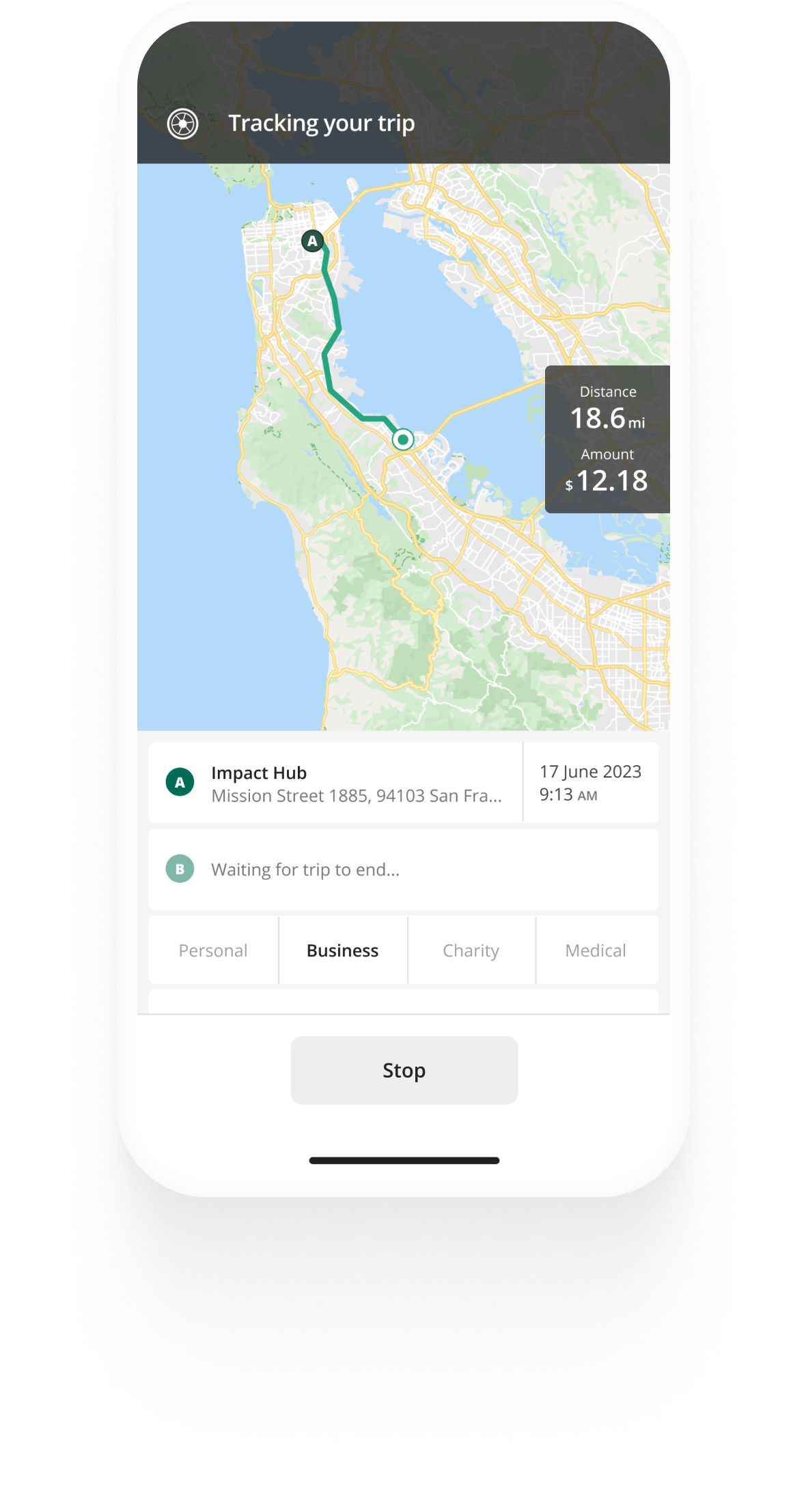Track mileage automatically
Get startedIRS Mileage
IRS mileage is a term used to refer to the tax deduction employees, self-employed and business owners can claim for their business-related mileage.
Every year, millions of individuals use their personal cars for work-related driving. In the case of your employer not reimbursing you for these expenses, the IRS has set up a mileage deduction scheme.
IRS mileage is deducted on a cents per mile basis. The tax authority sets a standard mileage rate each year which is meant to cover all costs of owning and operating your vehicle for business purposes. These costs include lease payments, road tax, insurance, fuel, maintenance and repairs among others.
The mileage rate is decided by the IRS each year based on the cost of owning and operating a vehicle in the United States.
The IRS mileage deduction scheme works in the following way:
- You record your business mileage throughout the year in IRS compliant records.
- Once the tax year is done, you multiply the driven mileage by that year’s mileage rate to figure out the deduction you can claim.
- You claim the mileage deduction on your tax return.
The 2025 mileage rate is 70 cents per mile for business-related driving. The 2024 mileage rate set by the IRS was 67 cents per mile.
If your employer reimburses you for your mileage, you are not able to claim mileage from the IRS.
Learn more about how you can claim IRS mileage depending on your situation in our IRS mileage guide.


Mileage tracking made easy
Trusted by millions of drivers
Automate your logbook Automate your logbook

Automatic mileage tracking and IRS-compliant reporting.
Get started for free Get started for freeFAQ

Tired of logging mileage by hand?
Effortless. IRS-compliant. Liberating.
Related posts
IRS Mileage Guide
February 10, 2025 - 10 min read
Mileage reimbursement in the US — rates and rules for employees, self-employed and employers in the US.
IRS Mileage
December 23, 2024 - 2 min read
Find out what IRS mileage is and how you can claim it. See how much you can claim per mile from the IRS for your business-related driving.
DoorDash Background Check
October 21, 2024 - 2 min read
Here’s what to expect when DoorDash conducts background checks, how Checkr works, and why it may take longer to get approved.

